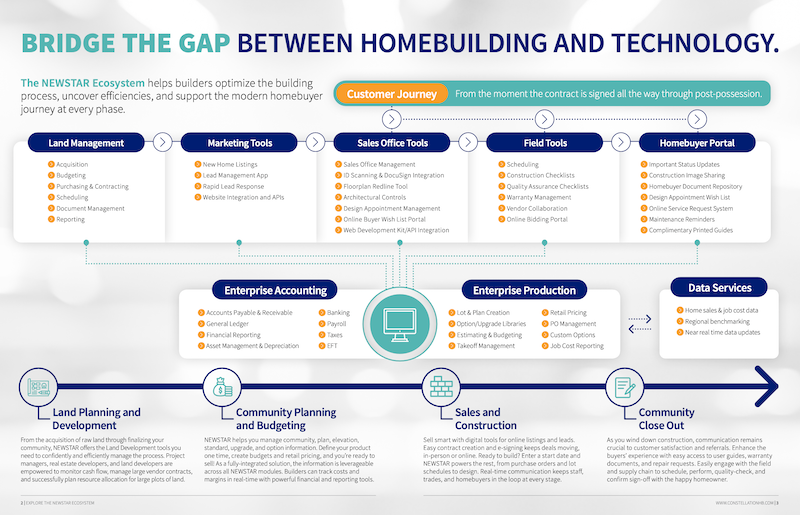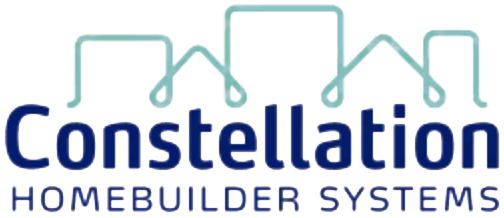Technology
Homebuilders: Are You Or Aren’t You In The Flow Of The Building Lifecycle?
On Warren Buffett, and why end-to-end mastery of a 10-stage building lifecycle – mining, sharing, operationalizing, measuring, learning from, and improving on – will ignite success and durability for modern homebuilders.

If homebuilding business opportunity and critical urgency stood side by side, could you tell them apart? Opportunities and existential imperatives can look and act like identical twins. What’s really hard to do is what sets up the biggest opportunities for some builders, and represents a crisis others must endure if they’re to survive.
And what exactly does Berkshire Hathaway Chairman Warren Buffett’s latest annual letter to shareholders fit into this challenge?

Hold that thought for just a moment.
A bright-line opportunity area for homebuilding business leaders in 2024 also amounts to one of the business’ lightning-rod urgencies: To modernize an end-to-end process in homebuilding investment, development, design, construction, marketing and sales, and customer care, called the building lifecycle.
A note of clarification here. We’re not talking exclusively about the vertical construction process and any potential gains from flowing that process through modern manufacturing, industrialization, automation, and robotics platforms.
We’re talking rather about a holistic value stream that – end-to-end – includes land and investment, product design, materials sourcing, construction assembly, neighborhood management, sales and marketing, customer experience, finance, personalization, and, ultimately, customer satisfaction, pulling through the entirety of overheads, variable, and fixed costs.

Operators – irrespective of size or geography or customer target or price range – know that the end-to-end value stream involves a couple of dozen or more competency areas, all running in intricately connected, concurrent, equally focus-intensive timelines. Each subprocess involves its own technical expertise, vocabulary, and markers of proficiency and efficiency, and the trick for every homebuilder is to get all of these butterflies to fly in formation.
End-to-end, in this sense, digitally threads a happily satisfied homebuyer consumer with the gamut of physical world pieces, moving parts, and processes – linear and non-linear – that feed back to happily-satisfied customers, repeatedly and predictably.
Success in securing and mastering 95% of that end-to-end process, but failure in just 3% of it can derail the whole value chain and even very possibly amount to scaling an algorithmic path to failure.
So, against today’s backdrop of real-time, real-life volatility, uncertainty, complexity, and ambiguity, unambiguous signs of growing consumer household demand for ground-up residential development and construction – new homes and new neighborhoods – collide head-on with a seemingly implacable, chronically underbuilt housing landscape.
Those turbocharged, iffy, spotty, and choppy forces and conditions make for a pressure cooker of opportunity and urgency.
The bright-line opportunity area – to modernize the end-to-end building and value lifecycle so homebuilding business leaders can accountably scale in sync with precious resources: Money, time, real estate assets, people’s efforts, materials, and products – hovers, while two typical strategic reflexes put operators at risk this year.
- In a “back-to-basics” mode, they tend to memorialize practices and routines that have worked in the past, ignoring solutions that can allow them to excel in an operating environment that’s moving faster and in different ways than ever before.
- In an “our way is best” mode, they go-it-alone with proprietary information, data, management, and benchmarking tools, but fail to measure efficiency, productivity, performance, and velocity against a high-level, consolidated standard of best practice.
We’d argue that mastery of that end-to-end building lifecycle, from pre-development to post-ownership customer satisfaction, means securing, harmonizing, and standardizing internalized data measures for both linear and orthogonal steps and stages in the value stream and making sure that those internal measures equal or exceed peer-level standards of practice.
Typically, homebuilders commit about .5% of gross revenue – or 2% of their gross margin – to investment in building systems research and development,” observes Chris Graham, President of Constellation HomeBuilder Systems, a supporting partner of The Builder’s Daily. “We’re investing an order of magnitude more than that in R&D. While we’re happy that individual homebuilders are outsourcing part of that innovation to solutions like ours, the real opportunity is for many of them to allow us to connect the dots to bring the solution up to the industry overall. We’re working to make customers comfortable sharing information with the industry, and that way we can build comparisons that they can use in their business, access data more easily, learn from it and improve it, and ultimately, make better business decisions.”
An example in the Constellation ecosystem of builder solutions includes its data, analytics, and benchmarking platform.
BuilderMetrix means unprecedented access to homebuilding data and trends that accelerate business decision-making,” says Bob Swainhart, Vice President of the Enterprise Solutions Group at Constellation. “With BuilderMetrix, you can benchmark your business performance and operational costs against the broadest, deepest, and most accurate industry information. It’s an opportunity to leverage the data in your ERP for quick and effective insights, available in near-real time.”
This adds up to mastering each interrelated, necessary phase of the building lifecycle, not just for each vertical structure, but at the neighborhood, divisional, and regional level as well. This, after all, is what builders do that’s both extremely difficult and profoundly rewarding.
Now, I'd like to point out a brief topical and timely aside here.
Fifty-nine times, Warren Buffet has written a letter to Berkshire Hathaway shareholders. Each year, he sums up his accountability in using their money – and his – to create more value for them.
In this year's 59th letter, Buffett writes under a heading "What We Do:"
Our goal at Berkshire is simple: We want to own either all or a portion of businesses that enjoy good economics that are fundamental and enduring. Within capitalism, some businesses will flourish for a very long time while others will prove to be sinkholes. It’s harder than you would think to predict which will be the winners and losers. And those who tell you they know the answer are usually either self-delusional or snake-oil salesmen."
Pry as you might, cleaving apart boldness from realism, separating the common sense from the electrifying vision, or unwinding the principled philosopher from the shrewd, worker-among-workers investment practitioner is impossible.
That’s because a carefully-penned 75-word “What We Do” paragraph, lays out – in the enormity of Berkshire’s holdings and interests, whose punchline is $37,350 billion in 2023 operating profit – a value life-cycle of modern investment enterprise. That passage maps a mumbo jumbo-free bee-line to building and earning investor customers’ trust, one valued person at a time, and engaging equally-trusted team members and associates in that system.
Buffett’s notes are invariably wise, wryly funny, and always come across as honest and humble. His use of the second person "you" feels like it really is you he talks to, not an abstract Wall Street type or a generalized three million shareholder accounts. The analyses simplify what's complex, lay bare what's obscure about each business matter he addresses, point to learnings and missteps, and celebrate and salute accomplishments – 100% of the time – of others rather than Buffett himself.
Three object lessons for homebuilders jump out in this letter – especially in the context of the opportunity and urgent challenge to modernize the building life-cycle.
- The power of trusted team-member partnership
- The meaning of working in plain sight to drive value for each valued customer
- The enhanced capacity of shared data, information, and performance measures to bend cost curves downward and value curves upward – to improve the business value cycle.
Warren Buffett’s candor in acknowledging his partner Charlie Munger’s role in what Berkshire could be and what it became attests to that power of trusted partnership homebuilders depend on, both among team members, trade partners, land sellers, and an entire ecosystem of stakeholders.
Charlie was the 'architect' of the present Berkshire, and I acted as the 'general contractor' to carry out the day-by-day construction of his vision.
Charlie never sought to take credit for his role as creator but instead let me take the bows and receive the accolades. In a way his relationship with me was part older brother, part loving father. Even when he knew he was right, he gave me the reins, and when I blundered he never – never –reminded me of my mistake.”
What’s more, homebuilder strategists and thought and practice leaders can also take a page out of Buffett’s unflinching customer focus at the very pinnacle of why Berkshire exists, not as lip service or an abstraction, but in a most personal, personalize, and pragmatic way.
Over the years, Berkshire has attracted an unusual number of … ‘lifetime’ shareholders and their heirs. We cherish their presence and believe they are entitled to hear every year both the good and bad news, delivered directly from their CEO and not from an investor-relations officer or communications consultant forever serving up optimism and syrupy mush.
In visualizing the owners that Berkshire seeks, I am lucky to have the perfect mental model, my sister, Bertie.”
Riding along with these timeless practices and truths runs a kaizen-like internalized expectation that there’s always room for improvement. Here’s how Warren Buffett puts it in his 2024 letter to shareholders:
Berkshire benefits from an unusual constancy and clarity of purpose. While we emphasize treating our employees, communities and suppliers well – who wouldn’t wish to do so? – our allegiance will always be to our country and our shareholders. We never forget that, though your money is comingled with ours, it does not belong to us.
With that focus, and with our present mix of businesses, Berkshire should do a bit better than the average American corporation and, more important, should also operate with materially less risk of permanent loss of capital. Anything beyond “slightly better,” though, is wishful thinking. This modest aspiration wasn’t the case when Bertie went all-in on Berkshire – but it is now.”
A modern homebuilder strives to excel, not just at what the team knows and does well, but at learning what can be done better and where new opportunities to grow and drive value lie ahead.
What has been a loosely hung together, barely managed hive of tasks and hand-offs now can – and needs to be – threaded digitally into a single, accountable value cycle from end to end. At the one end is your customer’s trusted experience of your value, and at the other is your team-member partners’ trusted role doing what each does best.
We’re working with the messiness of operational life at the individual homebuilder level, and by helping them, and rolling it up with our BuilderMetrix, we’re able to give them proof they’re more organized,” says Constellation CEO Chris Graham. “They’re making smarter business decisions and their team is all on the same page, learning to improve.”
Constellation provides fully-integrated or standalone software solutions expertly engineered to manage the complete ecosystem of a homebuilder’s business functions and growth.
MORE IN Technology
Design-Estimating Disconnects Cost Builders Time And Margin
Former builder-operators Brandon Pearson and Marcus Gonzalez share what’s broken—and how connected teams can win now and in 2030.
What Separates Homebuilders Thriving Amidst 2025’s Chaos
Builders face rising stakes to unify tech, data, and operations or risk falling behind amid affordability, insurance, and labor challenges.
Margin Mission: Homebuilders Race To Crack Inefficiency Code
Spring 2025 has fallen short of expectations. Builders are turning to integrated data systems to protect margins and prep for the next wave.


